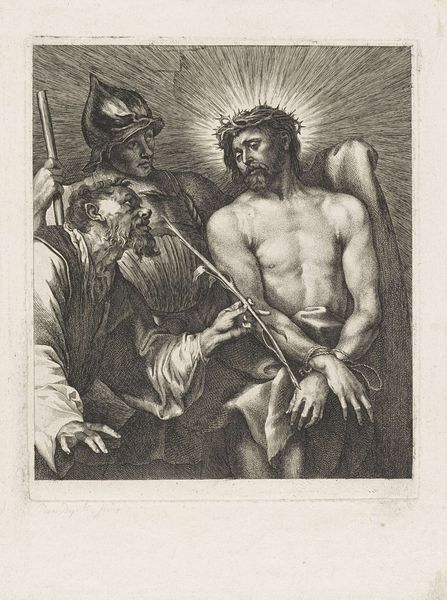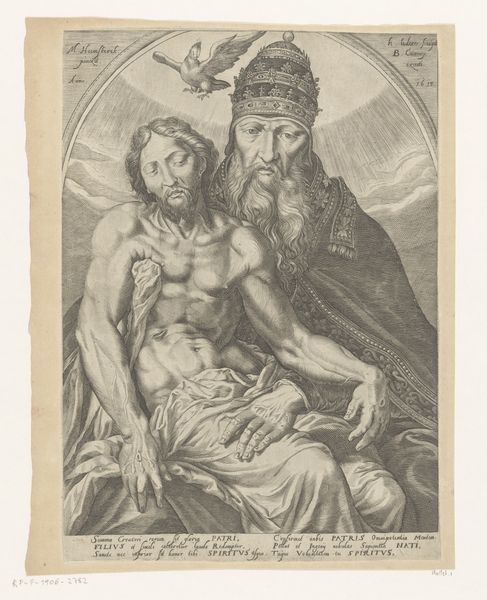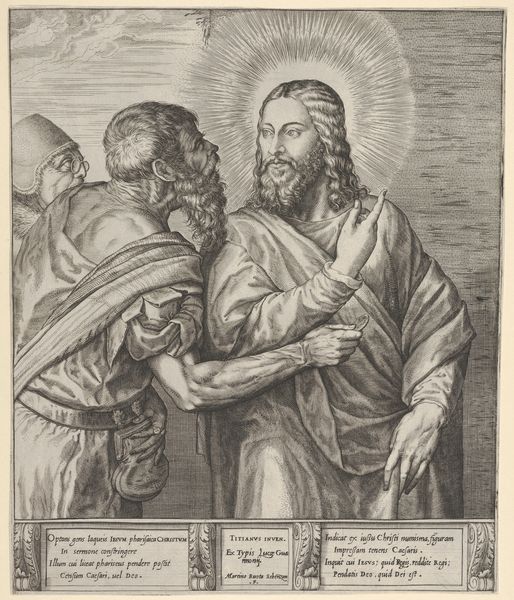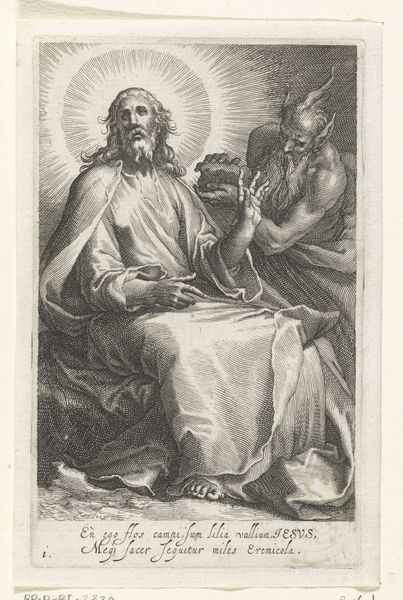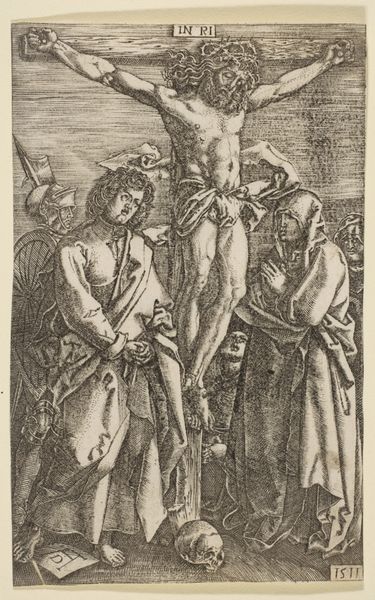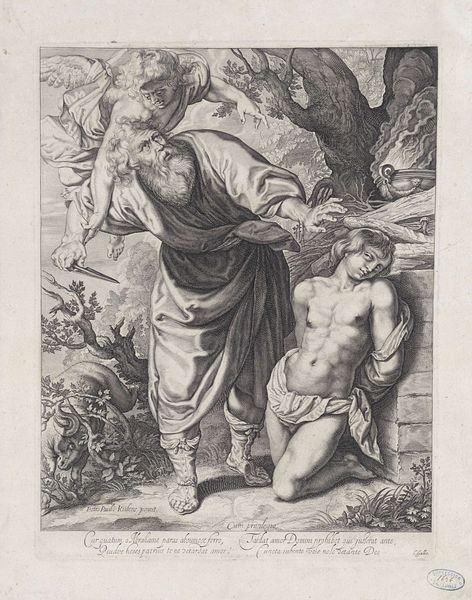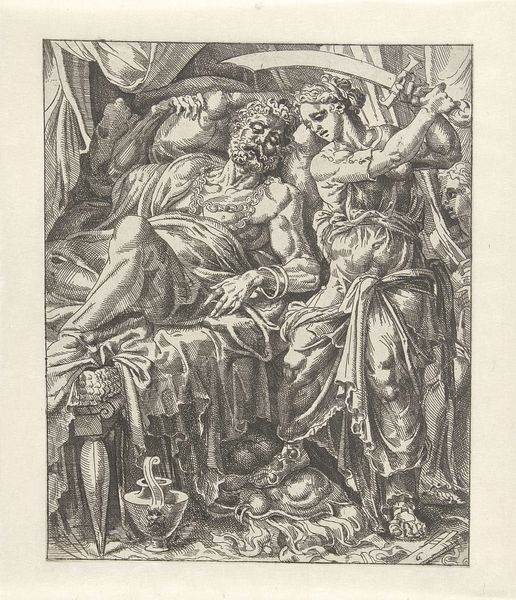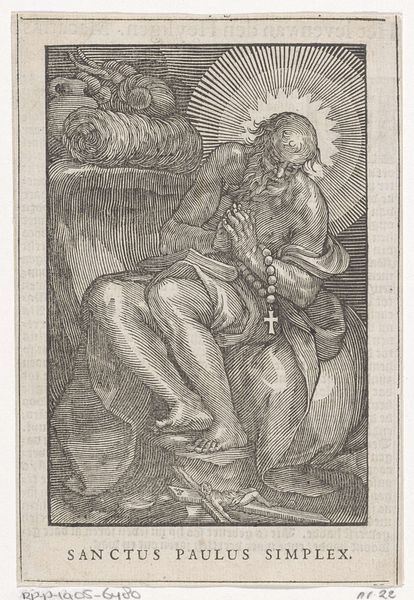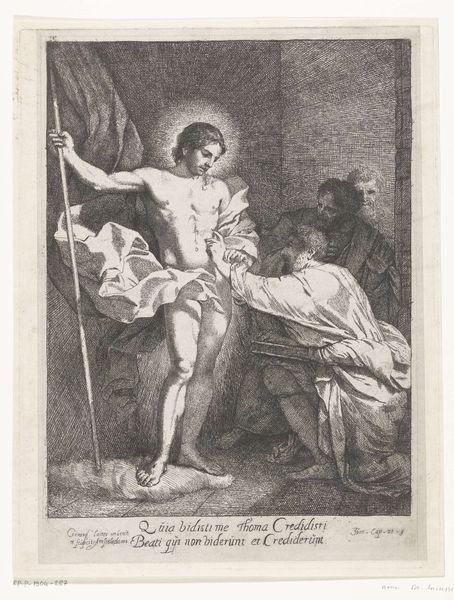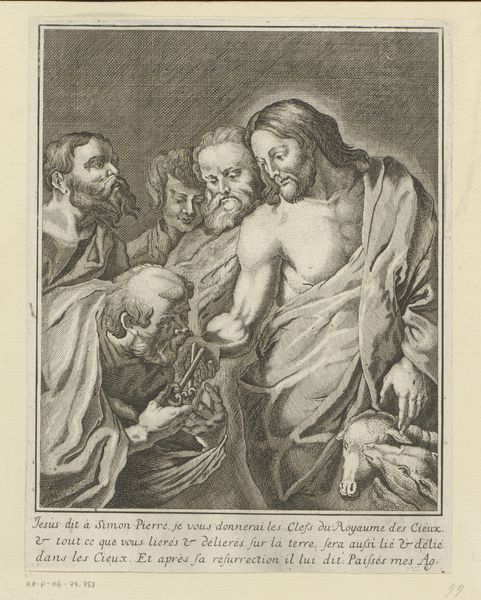
engraving
#
portrait
#
baroque
#
figuration
#
history-painting
#
engraving
Dimensions: height 338 mm, width 266 mm
Copyright: Rijks Museum: Open Domain
Curator: This engraving from 1716 by Lodovico Mattioli is entitled "Ecce Homo." It's a Baroque piece showing Christ with a crown of thorns, surrounded by his tormentors. Editor: It's brutal. The bleak tones accentuate the suffering etched on Christ's face. There's a vulnerability that just hits you. The central positioning of Jesus really underlines his isolation. Curator: Absolutely. Mattioli created this engraving based on a design by Anthony van Dyck, a prominent Baroque painter. Consider the political and religious context—images like this were powerful tools, especially for communicating messages about sacrifice and obedience. The historical implications surrounding such imagery of power are staggering. Editor: The attention to texture is captivating too. The rendering of the fabrics is incredibly delicate, the executioners look particularly rough and vile by contrast. The oval framing gives it an almost voyeuristic feel, as if we're peering in at this scene. This contrast enhances the themes of justice, the state, and religious belief. Curator: Note that Mattioli was an academicus Clementinus. Being part of the Accademia Clementina—a very prominent art institution of the time—provided him with commissions and public exposure that influenced the wider perception and patronage of Baroque art. This system solidified stylistic ideals and cultural values of the upper classes. Editor: It begs the question: who was this image intended for? Was it for devotional purposes? A commentary on power dynamics? I mean, seeing it now, knowing its historical implications of colonialism, I can't help but also wonder whose narrative is centered in the piece. Curator: Those are key questions to consider when looking at art. And they offer insightful contemporary approaches for situating pieces like this in the wider global conversations about exploitation and historical narratives. Editor: Exactly! Art forces these considerations to light and should ignite ongoing conversations, challenging dominant perceptions. I really appreciate the complexity revealed through historical context and thoughtful consideration of art's socio-political force. Curator: It’s that complex interplay of art and culture that makes looking at older art so important today, in this context.
Comments
No comments
Be the first to comment and join the conversation on the ultimate creative platform.
